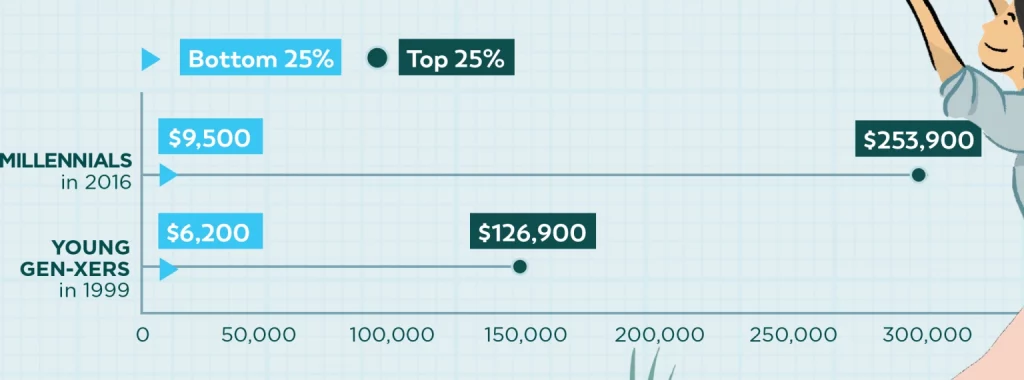To find your perfect home, there are so many more options for potential homeowners! From a single-family dwelling to a townhouse to a modular home, the choices are seemingly endless. But, before you start widening your search, let’s take a look at what makes these home types different – and which one is perfect for you!
Not surprisingly, almost half (53.6%) of Canadian households occupy the classic single-family detached house. In a distant second are condominiums with over a quarter of homeowners (27.9%) opting for this type of home (especially in metropolitan areas such as Toronto and Vancouver). Next come duplexes at 5.6%. The remaining homeowner choices are other housing options, such as semi-detached houses, mobile or modular homes and other single-attached dwellings such as urban infill homes, which come in at 12.9%.
So, which of these options is right for you!? Let’s take a look starting with the most popular option.
single-family detached
This is a single-family, stand-alone house that sits on its own lot and is the most common type of home you will find. As these are detached dwellings, they provide more privacy with less noise from neighbors. They also tend to be larger dwellings (complete with a yard!) which gives you the space and freedom to really make it your own. Due to the popularity of these homes, there is often high demand in them which can drive up selling prices. In some cases, this can lead to bidding wars and houses that sell for well over the asking price.
single-family, semi-detached
These homes are suitable for a single family and are typically attached to another house on one side. When compared to single-family detached homes, their semi-detached cousins are often more affordable to both buy and maintain. With this affordability does come somewhat less privacy and protection from noise due to the shared walls on one side. However, these homes typically have separate entrances and retain most of the privacy of a fully detached home.
duplex
These are considered structures with two single-family units on separate levels. These are great options for individuals looking to reduce home purchase and carrying costs – live in one unit, rent the second! This type of home also provides unique flexibility for older families, giving you the option to move adult children or aging parents into the second unit as needed.
As expected, these units offer less privacy than a single-family detached home and can sometimes have increased noise through the floor or ceiling.
townhouse or row house
Another popular home option are townhouses or ‘row houses’ as these are a row of single-family homes, which are connected on both sides to the next home (excluding the end unit, which is only connected on one side). Townhouses typically have private yards but, in some cases, it may be freehold or condo-style with shared ownership rights and responsibilities.
Due to the nature of these homes, they are typically more affordable than detached or semi-detached homes and also easier to maintain. Similarly, to duplexes however, these home types have less privacy and may have noise from shared walls. There are also monthly maintenance or strata fees to consider for the unit.
condominium
These are low- or high-rise buildings containing multiple apartment units. These units are individually owned, with shared ownership rights and responsibilities over the building and the common area. Condos are excellent starter homes for single adults, or couples, as they are affordable and require minimal maintenance. Some buildings even have shared amenities, such as a fitness center or swimming pool or party room.
Always check for these amenities and if you would be interested in using them. If not, why pay for them? In this case, you might be better off finding a condo with less amenities and lower strata fees. Additional considerations for condos are that these are typically much smaller than detached or semi-detached homes and there is generally more noise (depending on your buildings structure and soundproofing) and less privacy due to common areas.
modular or mobile home
Growing in popularity are modular homes, which are prefabricated homes delivered to a home-site for installation. These homes are owned by the individual, while the land it sits on could be rented or owned outright. Similar to modular homes, are mobile homes such as campers and RVs.
These types of homes are highly affordable and extremely flexible; if you relocate, you can sell the mobile home with the property or keep the home and relocate it! As these are less common and somewhat newer home types, there is less resale demand than other housing types and they are much smaller than a detached or even a condominium. If renting land in a mobile home community, there are also those costs to consider.
carriage house or urban infill
A carriage house is located on the periphery of a single-family detached house. Similarly, are urban infill homes which are a modern solution to crowded cities whereby existing space in established residential or commercial areas has been repurposed to maximize density and reduce urban sprawl.
These homes are unique in that they are often located in interesting, urban environments and have their own character when compared to other homes. They are also generally less expensive than a single-family detached home and some of the other types on our list. That said, there is potential for noise pollution if you are in a busy location. Due to the size, there is also limited inventory and limited or non-existent yard space. But if you’re looking for something affordable and unique, these are perfect for you! You can start your search by visiting SnapHomes.ca
Finding the right home to suit your needs means considering your lifestyle and budget now, as well as where you’ll be a few years down the road. Want more information or need help deciding the best option for you? Contact us to learn more about your options when it comes to buying and owning a home.

